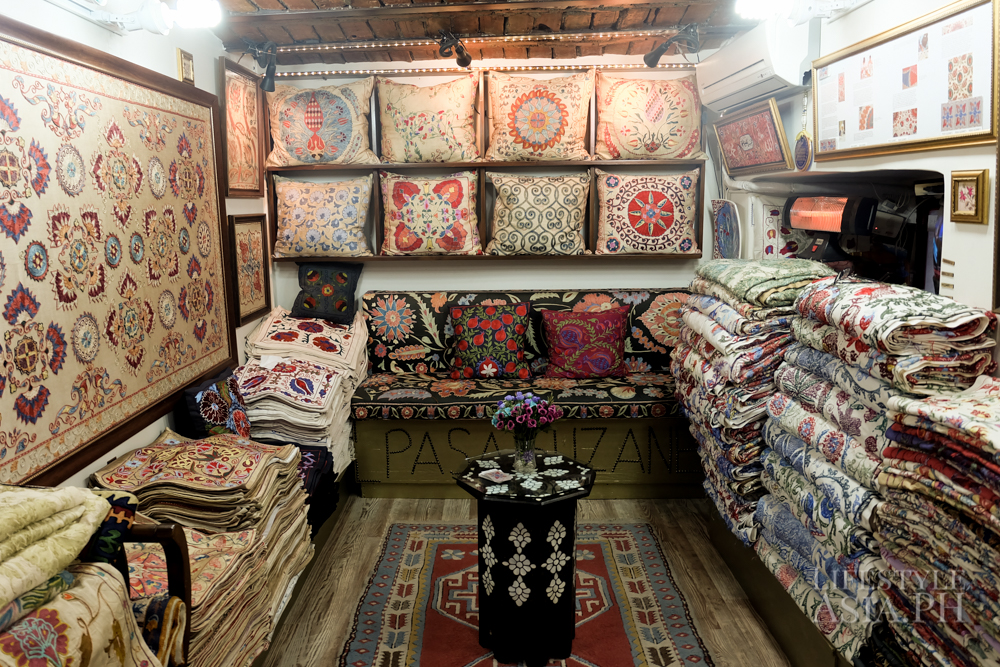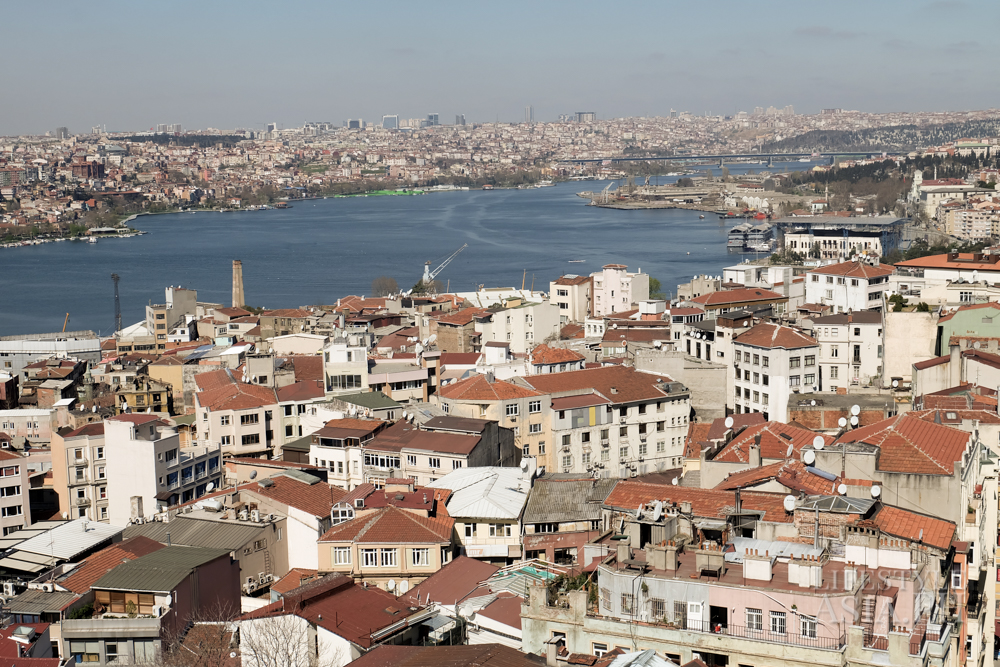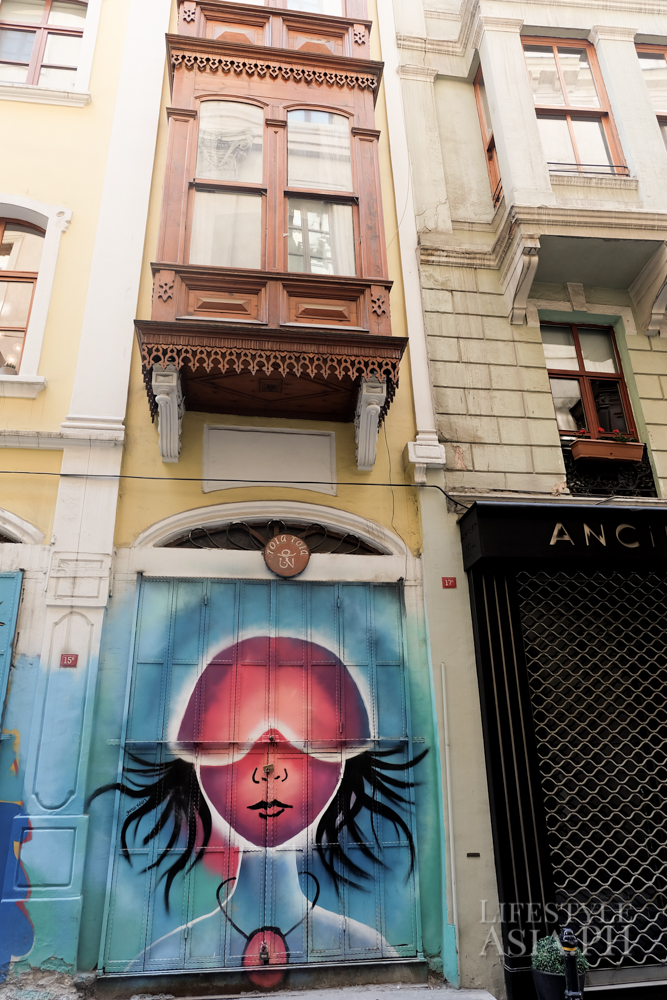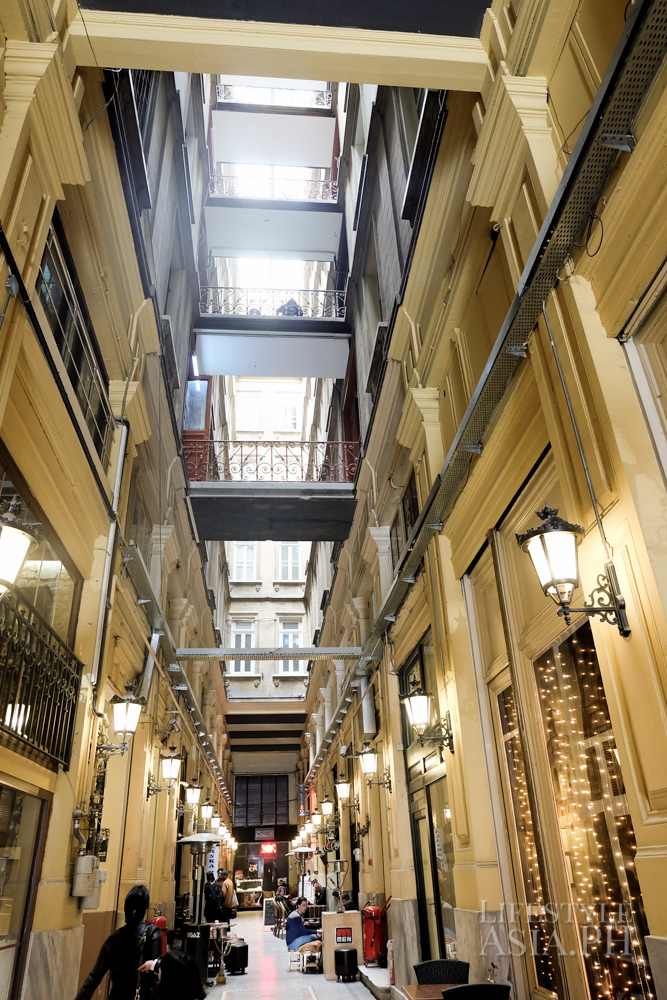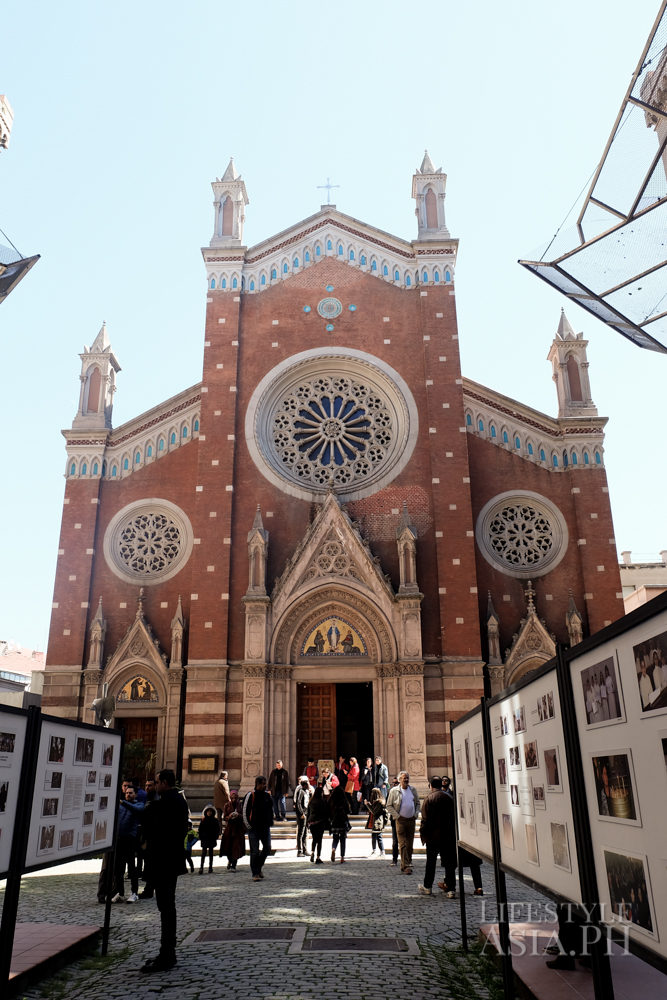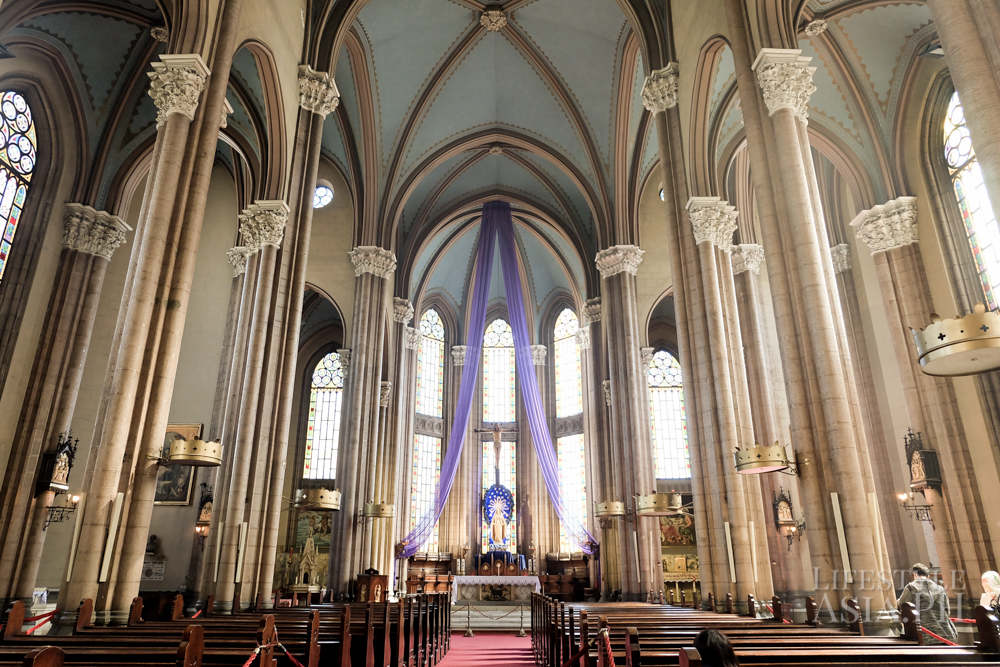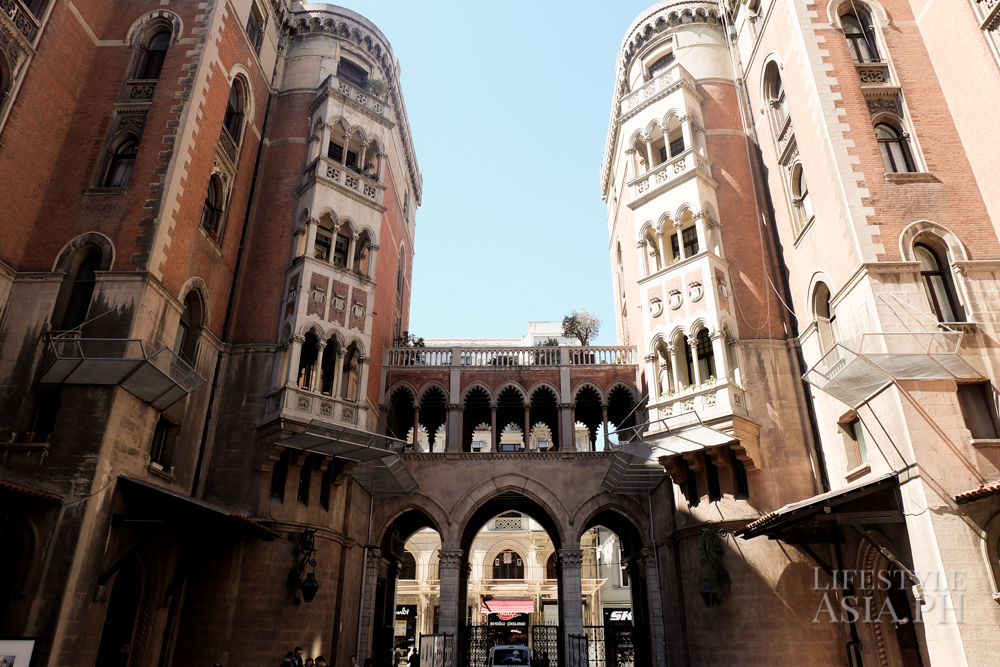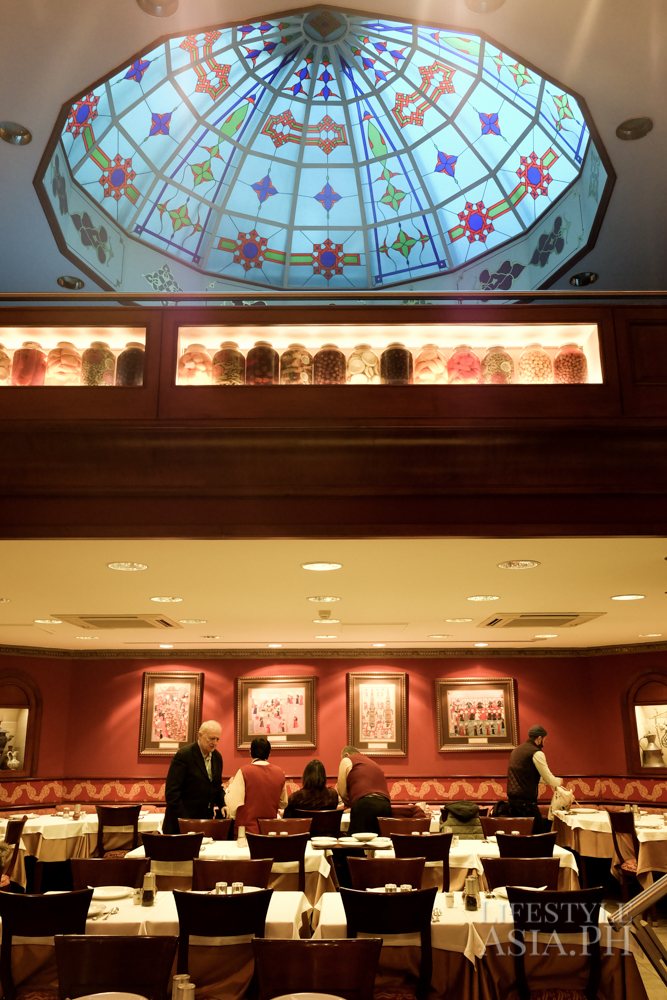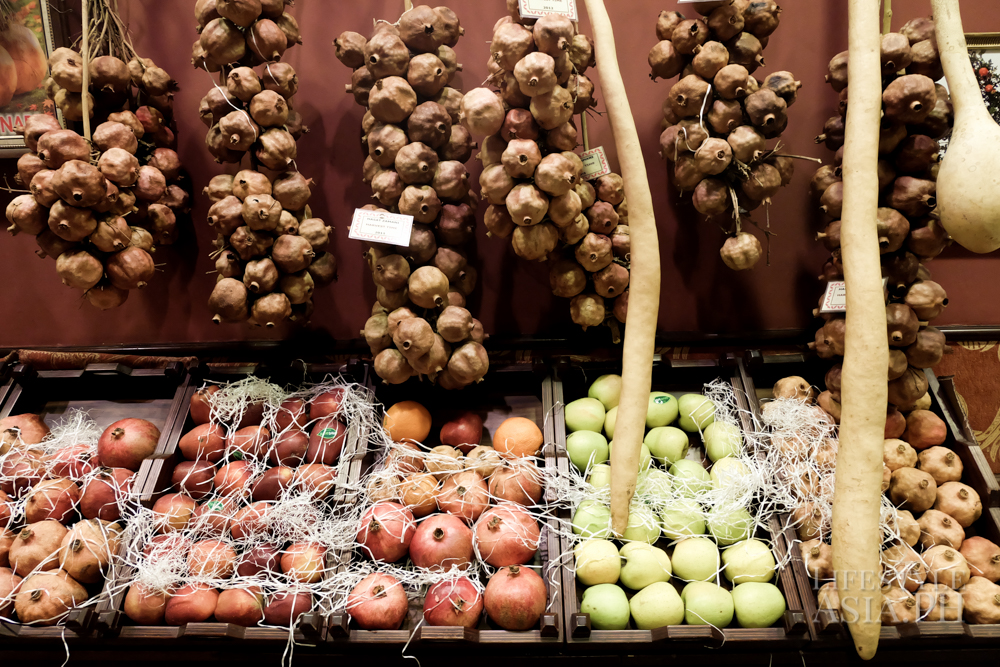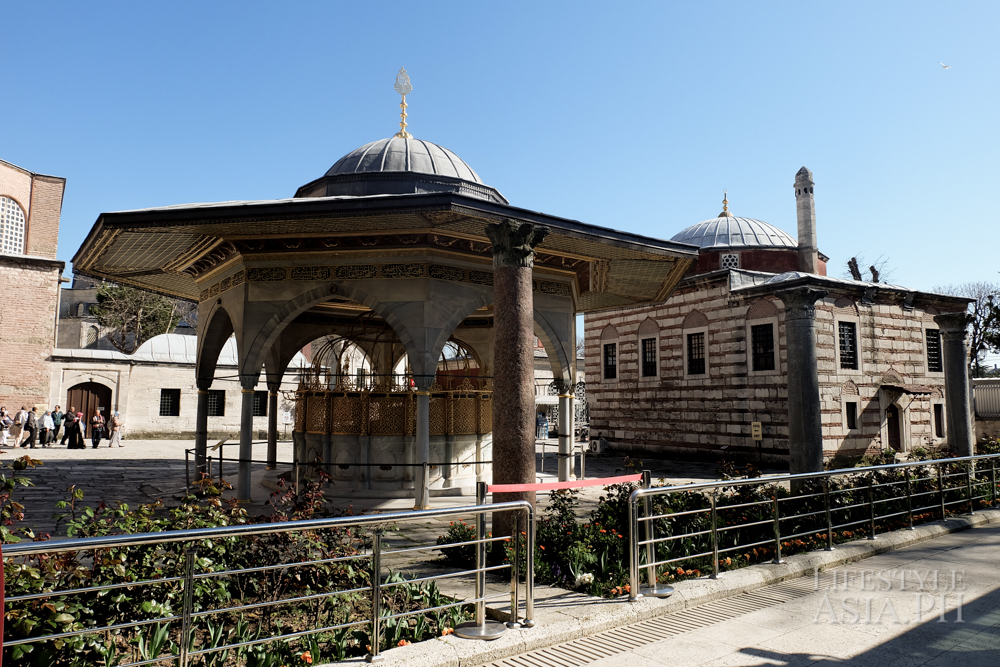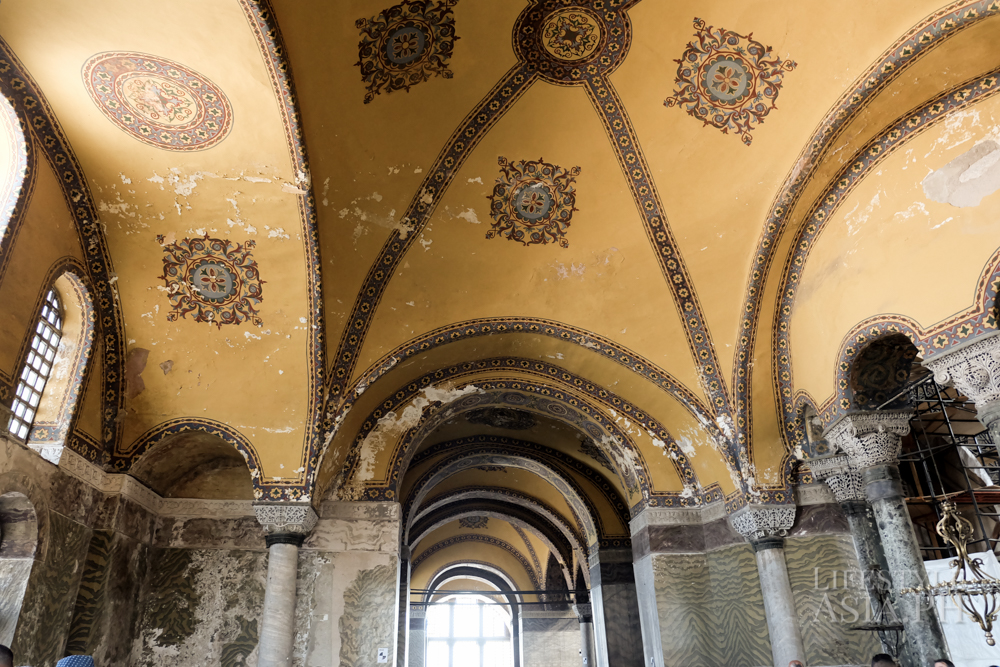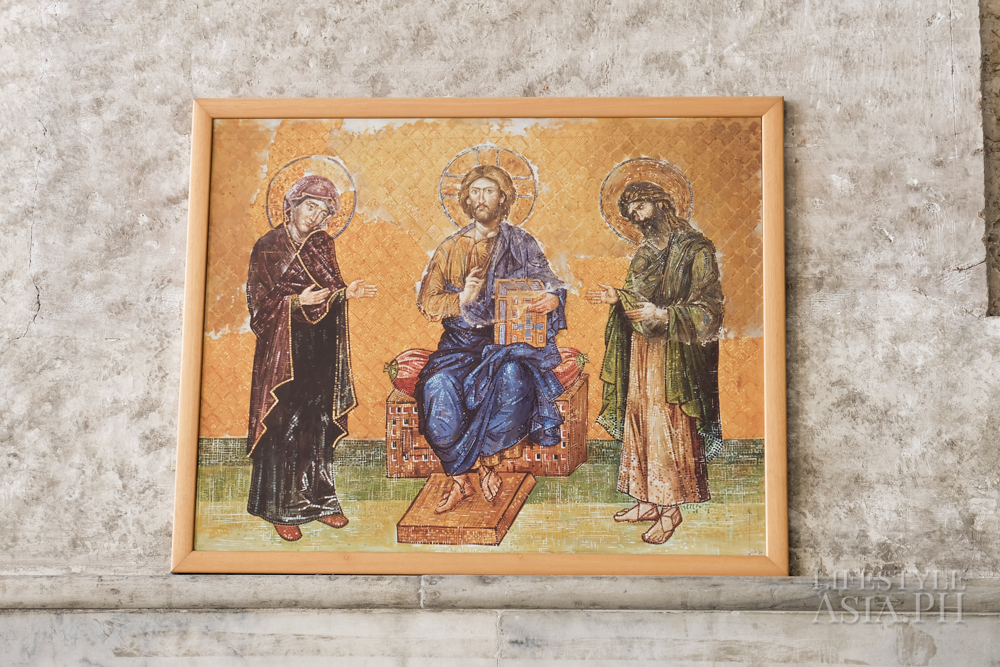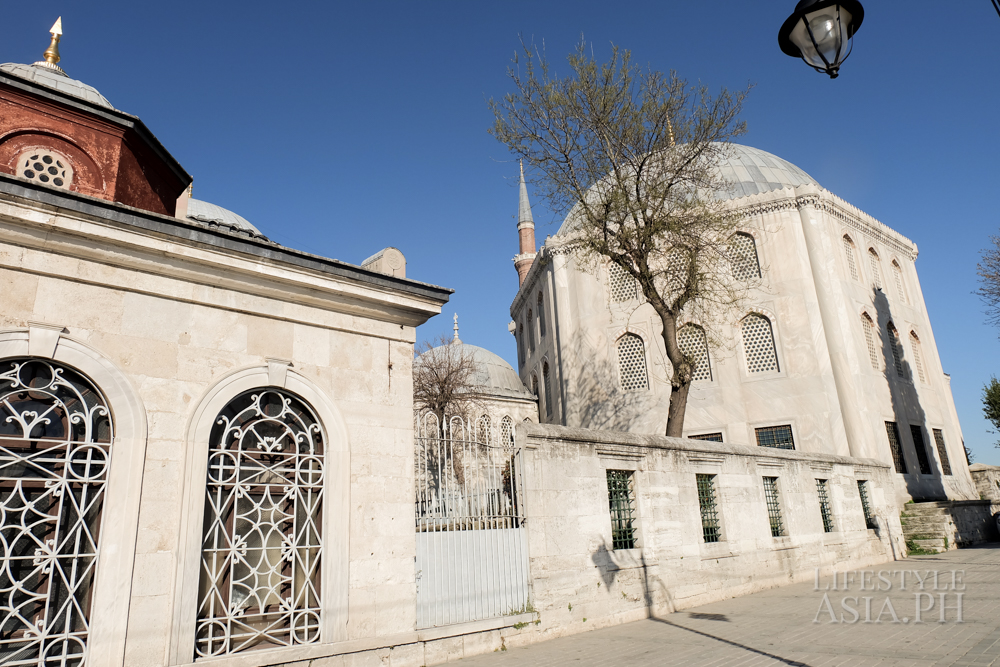It was a breathtaking introduction to Istanbul above the red roofs and over the skyline. The Bosphorus stretched out on the chilly morning of the first day in Turkey. There had been an anticipation of enchantment even before the Turkish Airline flight touched down at Ataturk Airport. Istanbul was the capital of the Roman Empire, the Byzantine Empire and the Ottoman Empire. Standing in the open terrace of a building several stories from the ground felt like a starting point to discovering old worlds in the 20th century.

Two Continents in One Country
We called our guide The Professor because he dressed like one in his suit and a briefcase in hand. The elderly Tahir Arda Dinçol was distinguished, erudite and kindly. He was tall and burly, with energy that never waned. Arda took us around the city, giving historical background, commentaries on current events and imparting a pride of place. Like a teacher reviewing his students, he repeatedly called out the names of landmarks from the Byzantine and Ottoman eras, which we passed during the days we were there.
He pointed out the Golden Horn as a point of reference to orient us on our location during the city tour. This seven-kilometer gulf had been a significant natural harbor since the 18th century, with waters from rivers that spawned resorts patronized by sultans, residents and traveling Europeans. These days, efforts are being made to address pollution and erosion of the water enclosed by the extended sweep of land.
The other important waterway that Arda constantly mentioned was the Bosphorus, the narrowest strait in the world for international navigation that connects the Black Sea and the Sea of Marmara. It cuts through Turkey, separating the peninsula’s European side from the Asian side. Turkey is a country that belongs to two continents.

Dining in a Palace
When the Ottoman sultan Mehmet the Conqueror successfully took Constantinople from the Romans in the 15th century, he built among others the Topkapi Palace. We walked through the Ceremonial Gate into a sprawling 700,000-square-meter complex he conceived into house apartments, official offices, pavilions, army barracks, dormitories, a library, a mosque and a huge kitchen that is currently a museum showcasing the cooking implements and tableware of that time.
Vaults and domes defined the classical Ottoman architecture with large windows that provided light and ventilation. The interiors showcased traditional crafts with mosaic and rich carpets, porcelain and tiles on the walls, floors and surfaces of the rooms.
After strolling through the courtyard, the Hagia Eirene, one of the early Christian churches and preserved meeting places and lodgings, we dined in a restaurant that had been the last pavilion built in a series of constructions through the centuries. An earthquake in 1509 and a fire in 1665 destroyed some of the buildings, leading to renovations and additional structures within the walled enclave.
The view was entrancing, with hues of blue from sky and water dominating a panorama of the Asian side. It was the main course that accompanied a traditional meal of günün çorbasi, the soup of the day, a salatalar or salad of fresh greens, tavuk marsala, which is marinated chicken seasoned with fresh herbs and marsala sauce, plated with sidings of vegetables and potato puree. Dessert was firin sütlaç sakizh, a mastic flavored baked rice pudding. The finisher was a glass of Turkish tea, which was offered in every meal we had in Turkey. The demleme çay bardakta is part of the dining tradition.


Altar for Three Faiths
Two attractions in Istanbul are highly suggested places to visit and for good reason. The Hagia Sophia and the Blue Mosque, which are a short walk away from each other, are not just architectural gems but historical and cultural landmarks. Ayasofya, in Turkish, was built between 325 to 360 A.D. as a basilica during Constantine I’s reign. The first Roman emperor convert to Christianity established residence in Byzantium, which had been Megara, a district of Attica before it became a Greek colony. He renamed the city Constantinople after himself. Constantinople later became Istanbul.
Hagia Sofia translates to “sacred wisdom” and is also known as the Church of Holy Wisdom. The original place of worship was a casualty of an insurrection and burned to the ground. Constantius, the son of Constantine, rebuilt the Christian church together with emperor Theodosius the Great. This, too, was set on fire in 532 during the most violent riot in the city’s history against the sitting emperor Justinian. After Justinian quelled the rebellion, he personally supervised the rebuilding of the Hagia Sophia 35 days after it was destroyed and constructed the Christian cathedral as it stands today. The satisfaction over the completed structure caused him to declare, “Solomon, I have outdone you,” alluding to Israel’s wisest king who built a magnificent temple in Jerusalem.
The basilica was an architectural jewel of the Byzantine period, standing on an elevation with a vantage view of the sea of Marmara and the Bosporus. Eschewing flammable wood, Justinian ordered premium marble of white Proconessos, pink Pyrgian, golden Libyan, ivory Cappadocian and green Tesselian for the columns, pillars and capitals. Brick walls, domes and arches, intricate mosaics, frescoes, lavish ornamentation established it as the foremost Byzantine cathedral in the western world. Its grandeur enthralled Mehmet, who appropriated it as his imperial mosque when the Ottoman sultan took over the city in 1453. Today, Ayasofya, declared a UNESCO World Heritage Site, is a museum undergoing renovation and restoration.

Sacred Spaces, Shopping Places
Hagia Sofia was the model for the nearby Blue Mosque, also known as Sultan Ahmed Mosque. So named for the blue tiles of the interior wall, it is an active place of worship where Muslims do their daily prayers five times a day. We heard the singular voice of an Imam’s call to prayer several times during the day and one while we were waiting to enter the mosque. The adhan was plaintive, addressing men to come and fulfill the mandatory worship. After they had performed their ritual prayers, visitors were allowed inside. We had to don a veil to enter, remove our shoes and maintain a level of quiet inside. Proximity to the sacred space of the Muslims and entering their place for prayer was a glimpse into the spiritual dimension of the Turkish people. While Islam is the dominant faith, there are also Jews and Christians, all of whom coexist in harmony. Turkey has no official religion and is secular by constitutional amendment.
The mosque was richly tiled with elaborate tracery, mother-of-pearl inlay on the doors, carved marble balustrades with filigree relief show the extraordinary handwork of skilled craftsmen.
A stopover at the Grand Bazaar was an opportunity to own some pieces of fine workmanship by artisans. The covered market prefaced today’s shopping malls by a few centuries. Mercantile activity brought together textile, metal craft, glass art, crafts, leather products under one roof. The inventory was staggering but it was the adjoining Spice Market that caused adrenaline to escalate. The variety of tea and tisane, Turkish delights, nuts and preserves, jams and local delicacies filled the stalls that offered free tasting. It was a kaleidoscope of colors and flavors under the domed building. The remaining hours for business was insufficient to fully savor the experience.

The Church on Istiklal
We had tea one chilly morning at the Galata Tower, looking out to the Golden Horn and the Marmara Sea. Gulls would fly down to perch on the walls by the window and become part of the scenery. The tower was used as an observatory for defense and later for the weather. Now, it has a shop and restaurants and a narrow balcony around the top floor where visitors can navigate for a top view of the port.
Sometimes, we veered away from the professor’s itinerary and wandered around the vicinity, discovering street art, paintings on the walls, vibrant colors and thought provoking graffiti. There were shops selling woven home linen, traditional clothes, metal art and ceramics, alongside boutiques with curated apparel by local designers.
The big shopping area was the pedestrian avenue of Istiklal, a 1.4 kilometer stretch of buildings of 19the and early 20th century vintage. It was picturesque, with the generations in contemporary attire going about their business against the backdrop of Beaux-Art, Renaissance, Neo-Classic, Art Deco and Neo-Gothic architecture. The professor pointed out several historical edifices and examples of First Turkish National Architecture styles that now housed shops, restaurants, bookstores, theaters, libraries and cafes.
A long the way there was a gate that led down to the Catholic church of St. Antoine. Standing in the courtyard was a striking cross that inspired quiet prayer. A Eucharistic celebration was happening inside and the opportunity to be part of the congregation was an unexpected but welcome happenstance.
Blue Horse
Another soul-satisfying stop along the street was a store selling old books, maps and engravings. Denizler Kitabevi was the kind of place for finding treasure. The shop is inside a century old house that had once been the Dutch embassy. Books, navigational lithographs and sails shared the walls and tables with catalogues, antiques and curios. It was among the volumes and framed prints that a blue horse claimed my heart. The painting was part of a series but that one in particular was right up there along the rose-flavored jam we had for breakfast and the golden tea with every meal. Half of the body emerged from the side of the page. The steed was caught in a pause, looking behind while still positioned forward. The rest of the equine anatomy was left to imagination.
It captured what a few days in Istanbul had been, a wrinkle in time, where the past was as real as the present. Reality had the quality of a dream, with echoes of a call to prayer and the taste of roses in the mouth. There was more to be discovered and a return was as compelling as the image of a horse in a shop on Istiklal street.
SEE MORE PHOTOS FROM ISTANBUL…
READ MORE TRAVEL RELATED STORIES….
